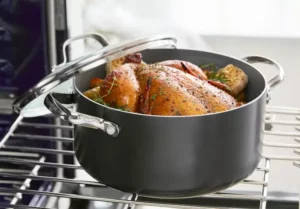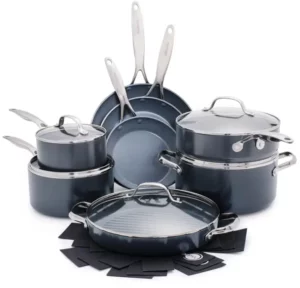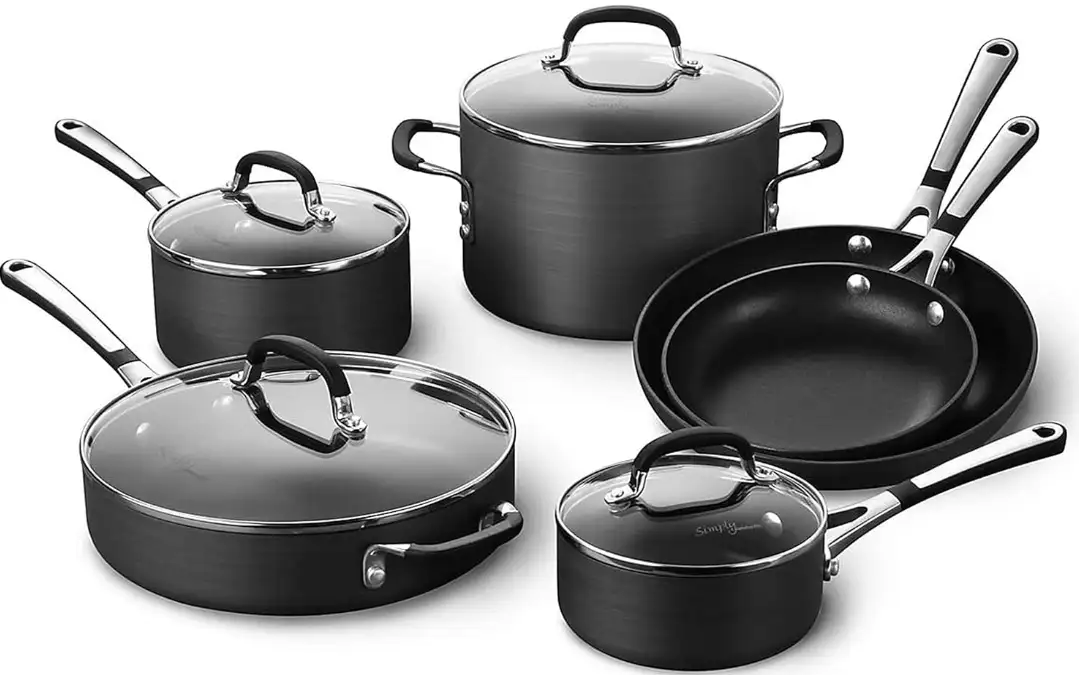Choosing the right nonstick cookware can be overwhelming.
Many cooks worry about safety and durability, especially when it comes to Teflon and similar coatings.
Confusion about what’s safe and which brands use Teflon or PTFE leaves many wondering if their cookware truly meets their needs.
Without clarity, you risk buying products that might not align with your health standards or cooking habits.
The wrong choice can lead to unwanted fumes from overheating or peeling surfaces, reducing the cookware’s lifespan and putting your family’s safety at risk.
In this guide, we’ll clarify the key differences between Calphalon and Teflon, explore their histories, and explain what each brand uses today.
By understanding how Calphalon’s PTFE coating differs from Teflon, you’ll be equipped to make the best choice for your kitchen.
What Is Teflon? Understanding the Basics

Teflon is a brand name for a nonstick coating made of polytetrafluoroethylene (PTFE), developed by DuPont.
Since its creation, PTFE has become popular in nonstick cookware for its ability to prevent food from sticking, making cooking and cleaning a breeze.
However, Teflon-coated pans have raised health concerns when overheated, as PTFE can release harmful fumes at extremely high temperatures.
If you’re concerned about the safety of your cookware materials, you might want to explore various non-toxic cookware alternatives available in the market today.
Does Calphalon Use Teflon? Clearing Up the Confusion
Though Calphalon uses PTFE-based coatings for their nonstick cookware, they don’t use the Teflon brand specifically.
Instead, they use a proprietary PTFE-based coating, which is just as effective at preventing sticking but is branded differently to clarify that it’s not Teflon.
This distinction is essential for consumers who might be concerned about health risks associated with Teflon specifically.
Calphalon’s coating is designed to withstand everyday cooking temperatures and is durable, but like Teflon, it’s best not to use it at excessively high heat.
For anyone concerned about PTFE coatings, another popular option is ceramic nonstick cookware, which doesn’t contain PTFE.
GreenPan’s ceramic cookware, for instance, is free from both PTFE and PFOA, making it an appealing choice for health-conscious home cooks who want a chemical-free cooking surface.

Ceramic coatings are also great for low- to medium-heat cooking and are especially popular among households looking to minimize potential chemical exposure.
The History of Calphalon: How It Evolved Without Teflon
Calphalon was founded in the 1960s, originally producing anodized aluminum cookware, which was durable and heat-resistant.
This material was a game-changer, offering a hard surface that resisted scratching and wear.
Over the years, Calphalon expanded into nonstick cookware, using PTFE-based coatings but keeping its own brand identity separate from Teflon.
This choice allowed Calphalon to create high-quality cookware that meets the needs of modern cooks who demand reliability without the Teflon brand.
Differences Between Teflon and Calphalon: Key Points
- Branding: Teflon is a specific brand of PTFE coating, while Calphalon uses its own PTFE-based coating, ensuring that you’re not buying Teflon but still enjoying nonstick benefits.
- Durability: Calphalon’s nonstick coatings are designed to last through regular kitchen use without the need for constant replacements, thanks to a double-coating process that enhances longevity.
- Health Concerns: Both Teflon and Calphalon’s PTFE coatings are safe when used correctly, but it’s essential to avoid overheating. For those who want to eliminate PTFE altogether, ceramic options like GreenPan’s nonstick cookware provide a PTFE-free experience.
Is Calphalon Right for You? Choosing the Best Cookware
If you’re looking for long-lasting, high-quality cookware with reliable nonstick properties, Calphalon’s products are a fantastic choice.
They’re crafted for durability, especially when used within their intended temperature range, and come in a variety of styles to fit any kitchen.
For cooks who prefer a completely PTFE-free option, ceramic pans might be the way to go.
While ceramic coatings may not be as durable as PTFE, they offer peace of mind for those who wish to avoid synthetic coatings altogether.
GreenPan ceramic nonstick sets, known for their commitment to non-toxic, PTFE- and PFOA-free products, offer an excellent alternative for those looking to make a shift.
Conclusion: Calphalon vs. Teflon – Making the Right Choice
Understanding the differences between Calphalon’s nonstick coating and Teflon can help you make a more informed decision.
Both provide nonstick convenience, but with Calphalon, you’re getting a uniquely branded PTFE coating rather than Teflon itself.
And if you’re looking to avoid PTFE altogether, ceramic options like GreenPan are a great alternative, offering safe, effective nonstick performance without any synthetic coatings.
Making the right choice in cookware doesn’t have to be complicated. With Calphalon, you get high-quality, reliable performance without Teflon.
And if a PTFE-free kitchen is what you’re aiming for, ceramic nonstick options ensure you’re cooking with peace of mind.

